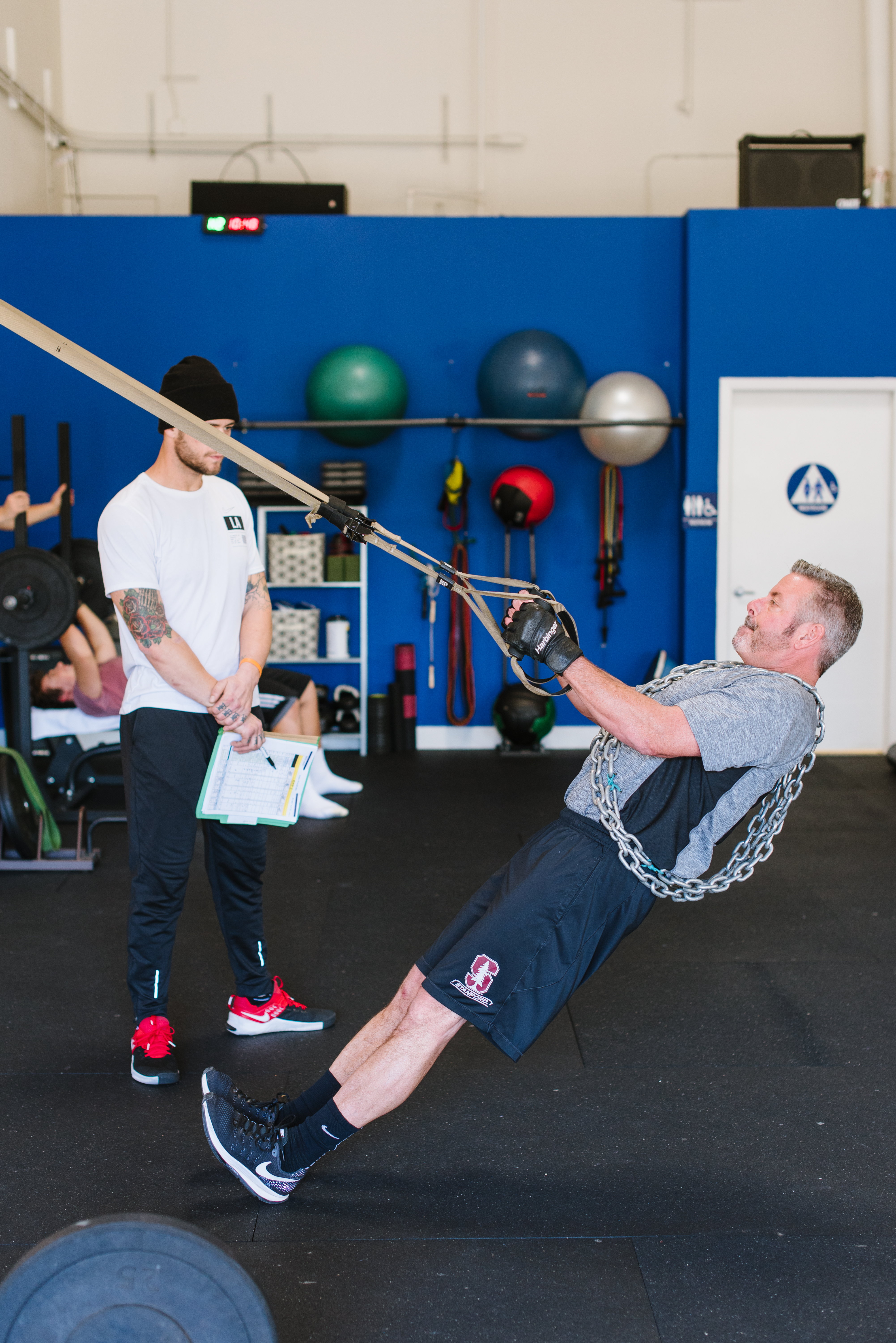“Can you make a brace for me?” One of our personal training clients, Frances, inquired jokingly. “Just so my shoulder blades and back can stay in place without me doing any work. Maybe just some brackets and a few deck screws to pin my shoulder blades in place so they don’t droop forward?” Frances added. This comment came after performing a set of the horizontal band pull apart exercise. This exercise strengthens the muscles attaching to the scapula, thoracic spine, and posterior portion of the humerus. By holding a resistance band in front of the body about clavicle height, retracting the shoulder blades, and maintaining extended elbows while performing ten to fifteen repetitions of pulling that band apart in a composed and controlled motion, a series of muscles attaching to the scapula and upper back are exercised. To ensure we get the most of this exercise, we give the cue to “park the shoulder blades” against the rib cage to ensure the muscles of scapular stabilization are engaged throughout the movements. On a serious note, I informed Frances, “You already have a brace. It’s those muscles that connect your shoulder blades to your arms and upper back.”
To appreciate the importance of the upper back and scapula region, it’s noteworthy to realize how the musculoskeletal architectural of the region. The scapula, or shoulder blade, has very few bone-to-bone attachment points. In fact, it’s sometimes referred to as a “floating bone” due to the limited number of attachments to bones. Instead of having strong insertions to joints of bones, the scapula has various muscles attached to it responsible for smooth and efficient movement of the shoulder rotator cuff joint and stabilization to the upper back and neck. If there is a lack of strength in the muscles of scapular stabilization, nagging and debilitating injuries can occur. Example of such injuries might be damage to the rotator cuff region, upper back and shoulder blade pain, or nerve pain associated with afflictions to suboptimal upper back and spine strength. Ensuring to pay particular attention to the integrity of the muscles surrounding the scapula allows us to reach overhead without pain, stand and sit up straight, and avoid pain that can ruin our day.
Movements associated with muscles attached to the scapula include full rotation of the rotator cuff, the gliding forward and backward of the shoulders, and stability to the thoracic and cervical vertebrae. We never know how much we use these movements until a simple strain to one the muscles attaching to the scapula occurs. A tweak to the neck can make turning around to look for cars as you are backing out of the Wholefoods parking lot a daunting a task. The last thing you would want is to throw out your arm and go through the parent shame of having to sit out while playing catch with your child before a baseball game. It’s worthwhile to remember that injury prevention to this area is critically important to the functions of our everyday life.
Circling back to Frances’ comment about his inquiry of having a brace installed to his upper back for stability purposes, the muscles, tendons, ligaments, bones, and various other connective tissue that we were born with are perfect pieces of hardware serving as structural support. The upper body consists of the rib cage, skull, and thoracic and cervical vertebrae. Each of these bones have attachment points offering structural support responsible for the physical forces we endure in our human performance. The muscles responsible for neck movements have attachment points from the base of the skull to the upper portion of the scapula. Muscular attachment points originating at the shoulder joints travelling to attach to more than five attachment points of the scapula function to move the arm in a multidirectional fashion along with preventing the chest to cave forward. If these muscles are maintained in optimal condition via exercise, we can prevent postural issues and pain throughout the upper back and shoulder region.
A cue we give our personal training clients as a reminder that we have our very own pre-installed brace for our upper backs is to “park the shoulders.” This cue is meant to remind the exercise participant to retract the shoulder blades backward and down the rib cage. After performing this movement, the chest is opened up and the shoulders are moving in the opposite direction of shrugging your shoulders. By “parking the shoulder blades,” collapsing forward of the chest is decreased and the bracing structures responsible for scapular and thoracic reinforcement are activated.
Pain and weakness throughout the body is a reminder we may not be utilizing our built-in human braces correctly. Use your built-in braces that have already been installed in our masterpiece of a skeleton to reinforce the body to live a pain free, healthy, and strong life.
Sean McCawley, the founder and owner of Napa Tenacious Fitness in Napa, CA, welcomes questions and comments. Reach him at 707-287-2727, napatenacious@gmail.com or visit the website napatenaciousfitness.com.

